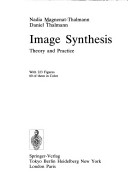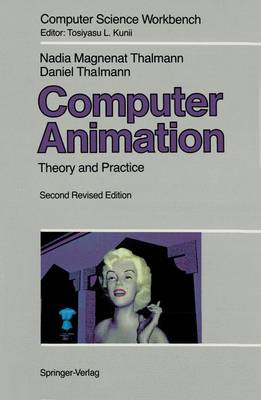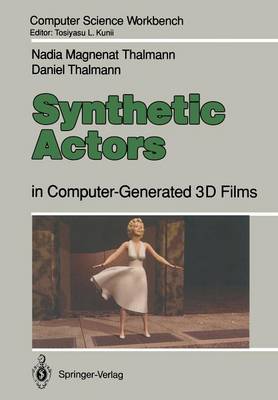Computer Science Workbench
3 total works
Image Synthesis
by Thalmann Nadia Magnenat, Daniel Thalmann, N Magnenat-Thalmann, and Nadia Magnenat-Thalmann
Published 1 December 1987
Image Synthesis: Theory and Practice is the first book completely dedicated to the numerous techniques of image synthesis. Both theoretical and practical aspects are treated in detail. Numerous impressive computer-generated images are used to explain the most advanced techniques in image synthesis. The book contains a detailed description of the most fundamental algorithms; other less important algorithms are summarized or simply listed. This volume is also a unique handbook of mathematical formulae for image synthesis. The four first chapters of the book survey the basic techniques of computer graphics which play an important role in the design of an image: geometric models, image and viewing transformations, curves and surfaces and solid modeling techniques. In the next chapters, each major topic in image synthesis is presented. The first important problem is the detection and processing of visible surfaces, then two chapters are dedicated to the central problem of light and illumination. As aliasing is a major problem in image rendering, the fundamental antialiasing and motion blur techniques are explained.
The most common shadow algorithms are then presented as well as techniques for producing soft shadows and penumbrae. In the last few years, image rendering has been strongly influenced by ray tracing techniques. For this reason, two chapters are dedicated to this important approach. Then a chapter is completely dedicated to fractals from the formal Mandelbrot theory to the recursive subdivision approaches. Natural phenomena present a particularly difficult challenge in image synthesis. For this reason, a large portion of the book is devoted to latest methods to simulate these phenomena: particle systems, scalar fields, volume density scattering models. Various techniques are also described for representing terrains, mountains, water, waves, sky, clouds, fog, fire, trees, and grass. Several techniques for combining images are also explained: adaptive rendering, montage and composite methods. The last chapter presents in detail the MIRALab image synthesis software.
The most common shadow algorithms are then presented as well as techniques for producing soft shadows and penumbrae. In the last few years, image rendering has been strongly influenced by ray tracing techniques. For this reason, two chapters are dedicated to this important approach. Then a chapter is completely dedicated to fractals from the formal Mandelbrot theory to the recursive subdivision approaches. Natural phenomena present a particularly difficult challenge in image synthesis. For this reason, a large portion of the book is devoted to latest methods to simulate these phenomena: particle systems, scalar fields, volume density scattering models. Various techniques are also described for representing terrains, mountains, water, waves, sky, clouds, fog, fire, trees, and grass. Several techniques for combining images are also explained: adaptive rendering, montage and composite methods. The last chapter presents in detail the MIRALab image synthesis software.
Computer Science Workbench is a monograph series which will provide you with an in-depth working knowledge of current developments in computer technology. Every volume in this series will deal with a topic of importance in computer science and elaborate on how you yourself can build systems related to the main theme. You will be able to develop a variety of systems, including computer software tools, computer gra- phics, computer animation, database management systems, and compu- ter-aided design and manufacturing systems. Computer Science Work- bench represents an important new contribution in the field of practical computer technology. TOSIYASU L. KUNII Preface to the Second Edition Computer graphics is growing very rapidly; only computer animation grows faster. The first edition of the book Computer Animation: Theory and Practice was released in 1985. Four years later, computer animation has exploded. Conferences on computer animation have appeared and the topic is recognized in well-known journals as a leading theme. Computer-generated film festivals now exist in each country and several thousands of films are produced each year.
From a commercial point of view, the computer animation market has grown considerably. TV logos are computer-made and more and more simulations use the technique of computer animation. What is the most fascinating is certainly the development of computer animation from a research point-of-view.
From a commercial point of view, the computer animation market has grown considerably. TV logos are computer-made and more and more simulations use the technique of computer animation. What is the most fascinating is certainly the development of computer animation from a research point-of-view.
This book presents the making of computer-generated films using three-dimensional synthetic actors. It is based mainly on the production of the film Rendez-vous a Montreal, an animated film that uses advanced computer techniques to achieve such effects as reincarnating film stars Humphrey Bogart and Marilyn Monroe. The main purpose of Rendez-vous a Montreal is to show that true synthetic actors can be created. This fllm represents a technological breakthrough which opens up new vistas in motion pictures, television, and advertising. With this technique, it will now be possible to produce short fllms or motion pictures featuring any celebrity in any situation. The book explains in detail how such a film can be produced using numerous drawings and color pictures. In particular, the following topics are presented: - Preparation of object construction: documentation search, and plaster models preparation - Object construction: digitizing and modeling - Body animation - Hand animation and object grasping - Facial animation: expressions, phonemes and emotions - Choreography: decors, actors, cameras, and lights - Realism: colors, lights, shading, shadows, and textures - Image recording: special effects Finally, an extensive appendix describes in detail the HUMAN FACTORY system.


